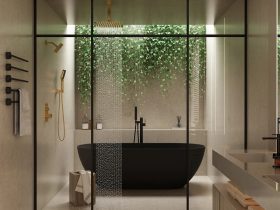When it comes to making decisions about building a home, one crucial factor that often gets overlooked is the influence of community design. The way a neighborhood or community is structured can have a significant impact on the choices individuals make when it comes to constructing their homes. Let’s delve into how community design plays a pivotal role in shaping home building preferences.

The Power of Community Aesthetics
Community design encompasses various elements such as architectural styles, landscaping, street layouts, and amenities. These components collectively contribute to the overall aesthetic appeal of a neighborhood. Homeowners are often drawn to communities that exude a sense of charm and visual harmony. As a result, individuals may be more inclined to select home building options that align with the prevailing aesthetic standards of the community.
Functional Considerations
Aside from aesthetics, community design also influences functional aspects of home building choices. For instance, the layout of a neighborhood can dictate the size and configuration of homes that can be built on individual lots. Zoning regulations and architectural guidelines set forth by the community can impact the types of structures that are permissible, influencing decisions on building styles, sizes, and features.
Environmental Sustainability
In recent years, there has been a growing emphasis on sustainable and eco-friendly building practices. Community design can play a pivotal role in promoting environmental consciousness among homeowners. Sustainable communities with green spaces, energy-efficient infrastructure, and access to public transportation may encourage individuals to opt for eco-friendly home building options such as solar panels, rainwater harvesting systems, and energy-efficient appliances.
Social Connectivity and Lifestyle Preferences
Community design also influences social dynamics and lifestyle preferences. Neighborhoods with pedestrian-friendly layouts, communal spaces, and recreational amenities can foster a sense of community and connectivity among residents. Homeowners may be more inclined to choose building options that cater to their desired lifestyle, such as open floor plans for entertaining, outdoor living spaces for social gatherings, or home offices for remote work.
Future Resale Value
Considering the resale value of a home is a key factor for many homeowners. Community design can significantly impact the desirability and marketability of a property. Neighborhoods with well-planned infrastructure, proximity to amenities, and strong community engagement are likely to attract potential buyers in the future. Consequently, individuals may prioritize home building choices that enhance the resale value of their properties.
Community design serves as a silent influencer in the realm of home building choices. By understanding the impact of community aesthetics, functional considerations, environmental sustainability, social connectivity, and resale value, homeowners can make informed decisions when it comes to constructing their dream homes. Ultimately, the synergy between community design and home building choices creates vibrant and cohesive neighborhoods that reflect the values and aspirations of their residents.





